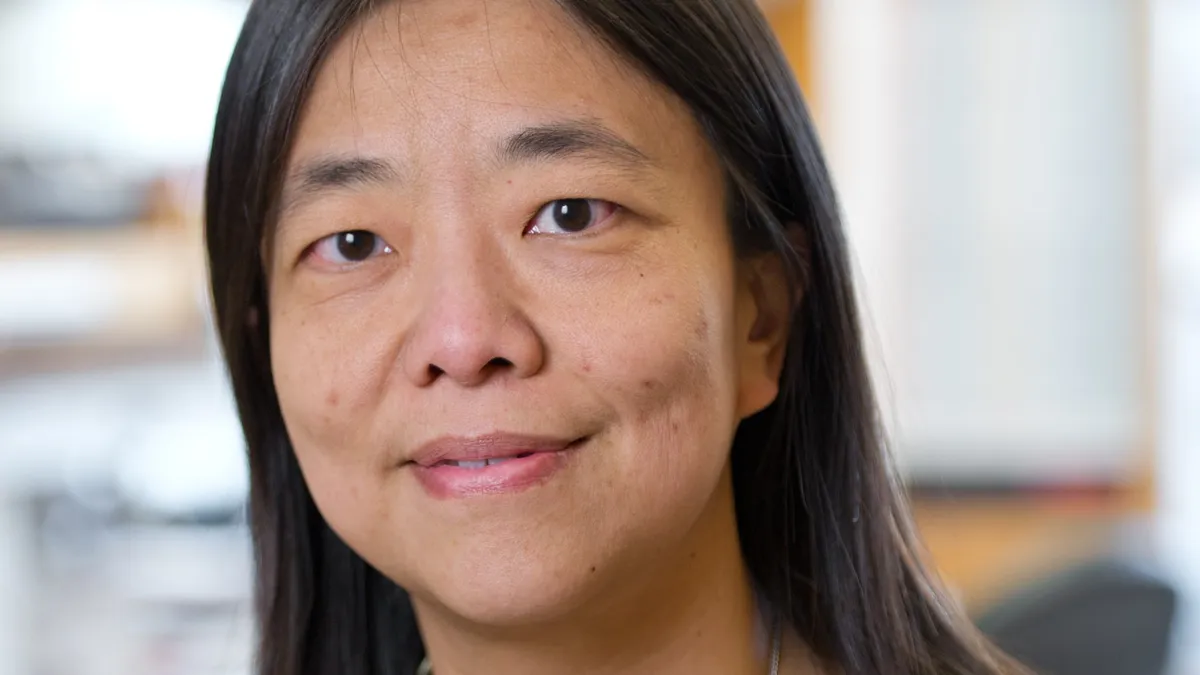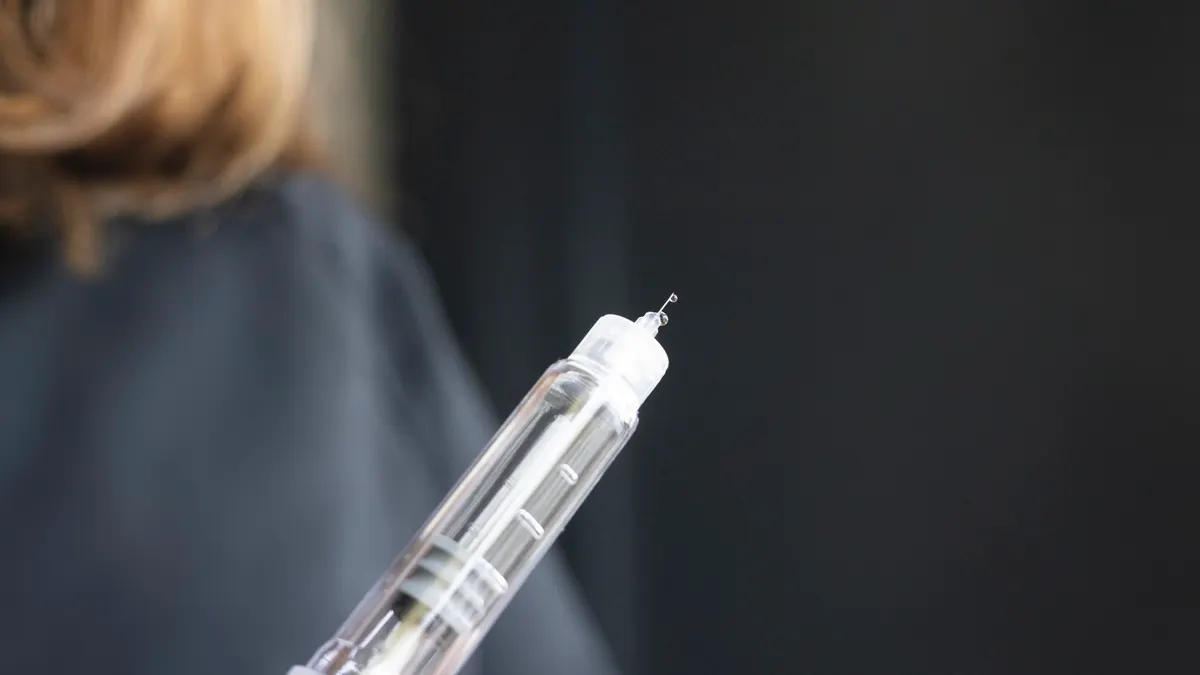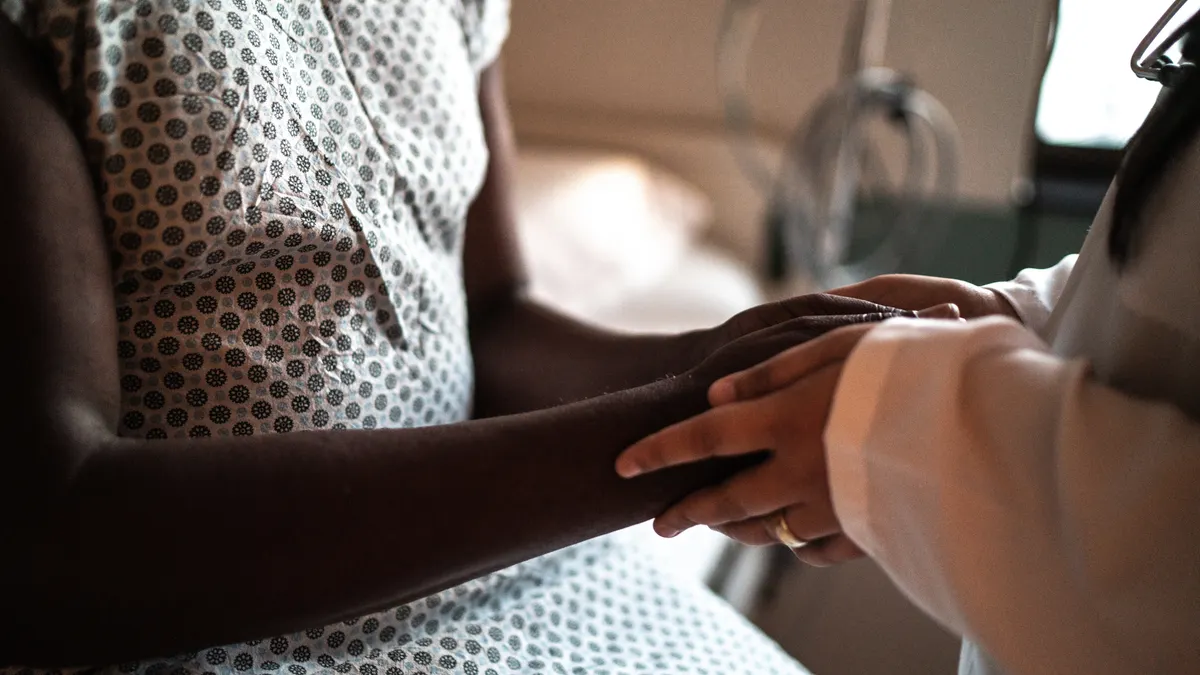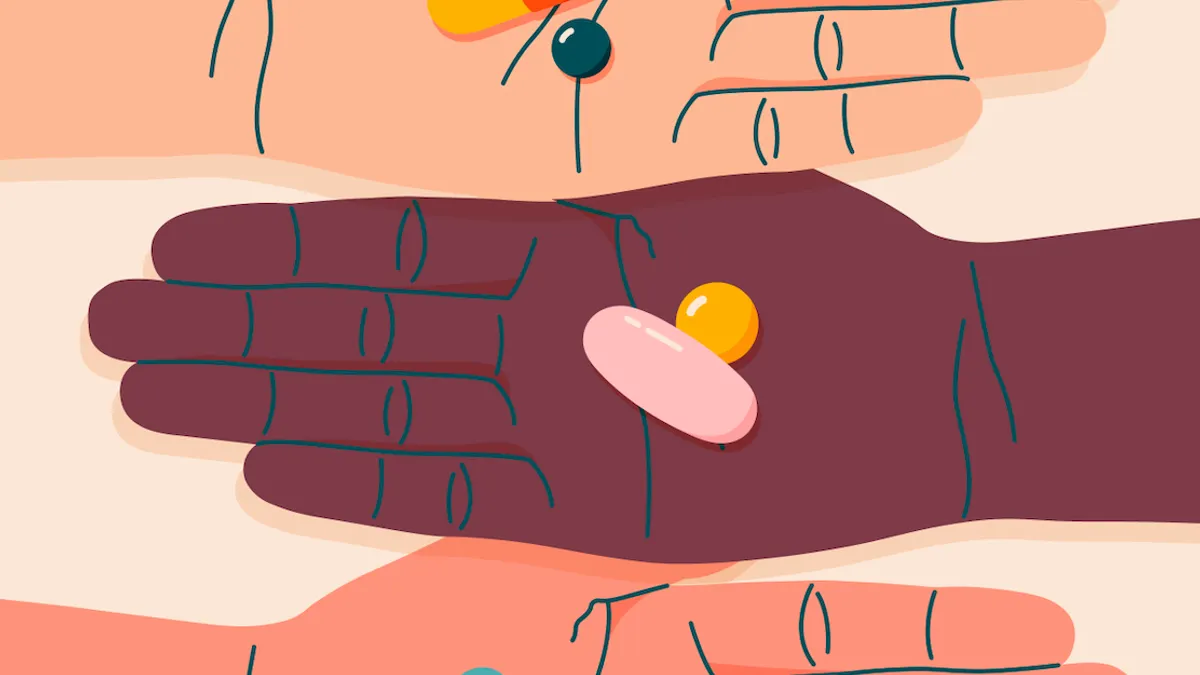Dr. Vivian Cheung is in the relatively unusual position of being a rare disease researcher who lives with a rare disease. In many professions, personal experience in a field only strengthens expertise — but for scientists, clinical investigators and physicians, the perception can be a little different.
“I think in medicine and in science, there's this idea that people should be perfect, and that somehow spills over into the idea that people should also be physically perfect. It makes people very unwilling to disclose a disability,” said Cheung, a pediatric neurologist and professor of pediatrics at the University of Michigan who heads up the Vivian Cheung Lab there.
“We somehow want to be different from the patients that we care for, which really is too bad,” she said.
Cheung has a very rare mutation of the LTBP4 gene that has affected her vision and balance. She’s also experienced firsthand the challenges that come with such a diagnosis in a way most scientists and physicians do not.
She filed a discrimination lawsuit against the Howard Hughes Medical Institute after the research organization declined to renew her contract in 2018 when she was diagnosed. The trial is scheduled to start December 4. A Maryland Circuit Court recently denied HHMI's motion for summary judgment. Cheung’s team, which studies “the shape and structure of RNA and related rare diseases, mostly neurologic diseases that affect children,” discovered differences in RNA-DNA sequences beyond what was already known.
“As a scientist with a disability, I certainly have to work harder … to prove I deserve that seat at the table. It's hard to be a woman, a woman of color and have a disability.”

Dr. Vivian Cheung
Pediatric neurologist and professor of pediatrics at the University of Michigan
“My lab studies how the sequences of RNA affect the function. We used to think that DNA is just kind of the blueprint of everything, so when we go from DNA to RNA to protein, all the sequences are the same. But my lab found that the RNA actually are much more complicated,” she said. “The sequence and the structure of RNA are really important because we cannot make medicine out of RNA unless we know the sequence and the shape of those [RNA] arms.”
However, in some ways, perceptions of Cheung’s disability have overshadowed her work. In getting diagnosed, one of her medical procedures accidentally left her with a spinal cord injury, requiring her to use a wheelchair for a little over a year.
As a result, Cheung had trouble commuting back and forth between Maryland, where she was establishing a project for children with ALS with collaborators at the NIH, and her lab at the University of Michigan. Eventually, Cheung said HHMI offered her medical retirement.
She said HMMI “told me that I should accept the offer for medical retirement.” She wasn’t even 50 years old at the time.
“I did not accept their offer to retire — I went up for the renewal, and they did not renew,” she said.
A spokesperson for HHMI said in an email that “the record clearly supports our position that Dr. Vivian Cheung’s allegations have no merit.” The organization employs a “rigorous process” of peer review for appointment renewal that includes written submissions, an oral presentation and an assessment of scientific accomplishments and breakthroughs, the spokesperson said. “HHMI believes strongly that science needs to be inclusive of scientists from all backgrounds and perspectives, including scientists with disabilities.”
Firsthand experience
Cheung has transitioned many of her patients into wheelchairs over the course of her career as a pediatric neurologist, but never really understood what that meant in a practical sense until she started using one herself.
There are challenges, of course, like discrimination and physically navigating inaccessible spaces, but also subtler things like “getting used to society looking at us differently.”
“I still remember showing up at work the first time in the chair and all of the eyes that fell on me,” she said, adding that she had to learn to “deflect those eyeballs … knowing that the person in the chair and the person standing up is the same person.”
Yet for all the struggles that come with having a rare disease and disability, it has also offered her professional advantages.
"I think in medicine and in science, there's this idea that people should be perfect, and that somehow spills over into the idea that people should also be physically perfect."

Dr. Vivian Cheung
Pediatric neurologist and professor of pediatrics at the University of Michigan
“I think it makes me understand much more acutely why it is so important to understand a disease,” she said. “Instead of it just being a career, I … am closer to my patients because I understand the day-to-day.”
She feels the same way about her work as a researcher.
“Compared to that younger version of me, I certainly am much more focused, and I feel that urgency to solve problems,” she said.
An industrywide issue
Cheung’s experience highlights a larger issue within academia and research: a lack of disability representation.
Increasing diversity in the life sciences is a buzzy topic, and rightly so. But disability often seems to be forgotten in that conversation, both when it comes to clinical trial participation and the researchers themselves.
“As a scientist with a disability, I certainly have to work harder … to prove I deserve that seat at the table,” she said. “It's hard to be a woman, a woman of color and have a disability.”
New research in the journal PLOS Global Public Health is calling for a “diversity factor” to evaluate scientific journals and research papers. This metric considers the demographics of the researchers who perform studies, as well as the patients who participate in them.
Today, most researchers are white, male and from wealthy countries, the authors noted.
“What happens when all of the authors involved in a project are alike is that they’re going to have the same blind spots. They’re all going to see the problem from the same angle,” co-author Leo Anthony Celi, a senior research scientist at MIT’s Institute for Medical Engineering and Science, said in a statement. “What we need is cognitive diversity, which is predicated on lived experiences.”
They’re also mostly able-bodied, and even the new “diversity factor” doesn’t explicitly mention disability.
The value of lived experience extends to disability, but Cheung notes it’s difficult to determine how many scientists and researchers are in that boat, especially since many people are afraid to disclose their disabilities.
The numbers that do exist, though, paint a bleak picture. Cheung points to one study showing that just 1.2% of NIH grant applicants had principal investigators who reported a disability. As many as 27% of adults in the U.S. have some type of disability.
In filing her lawsuit and advocating for herself, Cheung wants “things to change for scientists with disabilities,” especially since she often sees students and trainees with disabilities questioning whether they belong and even leaving to pursue other fields.
“I think that having us in the biomedical field is really important,” she said. “I am hoping that this will give us a chance to think about what really can be done so we can truly have a more diverse biomedical workforce.”



















